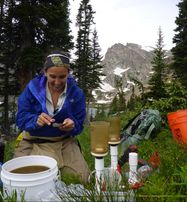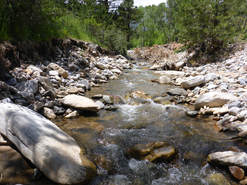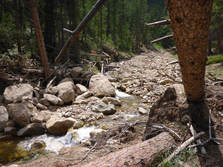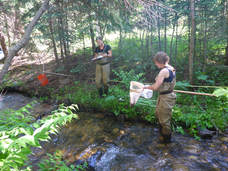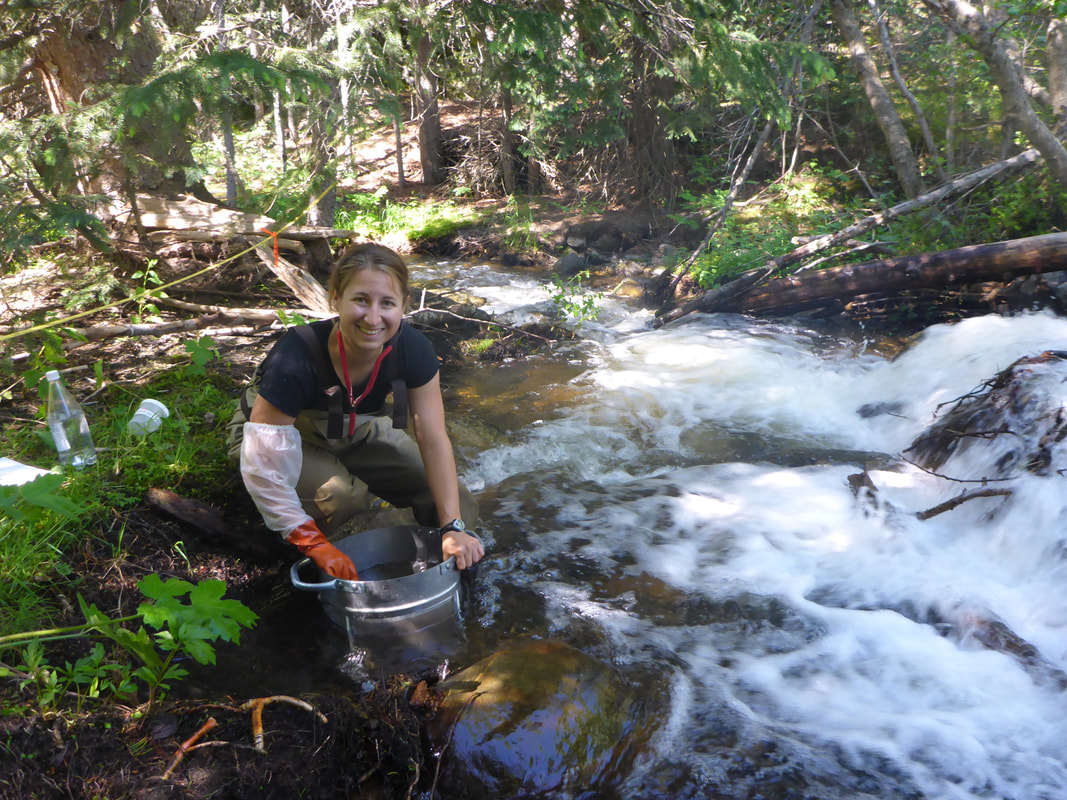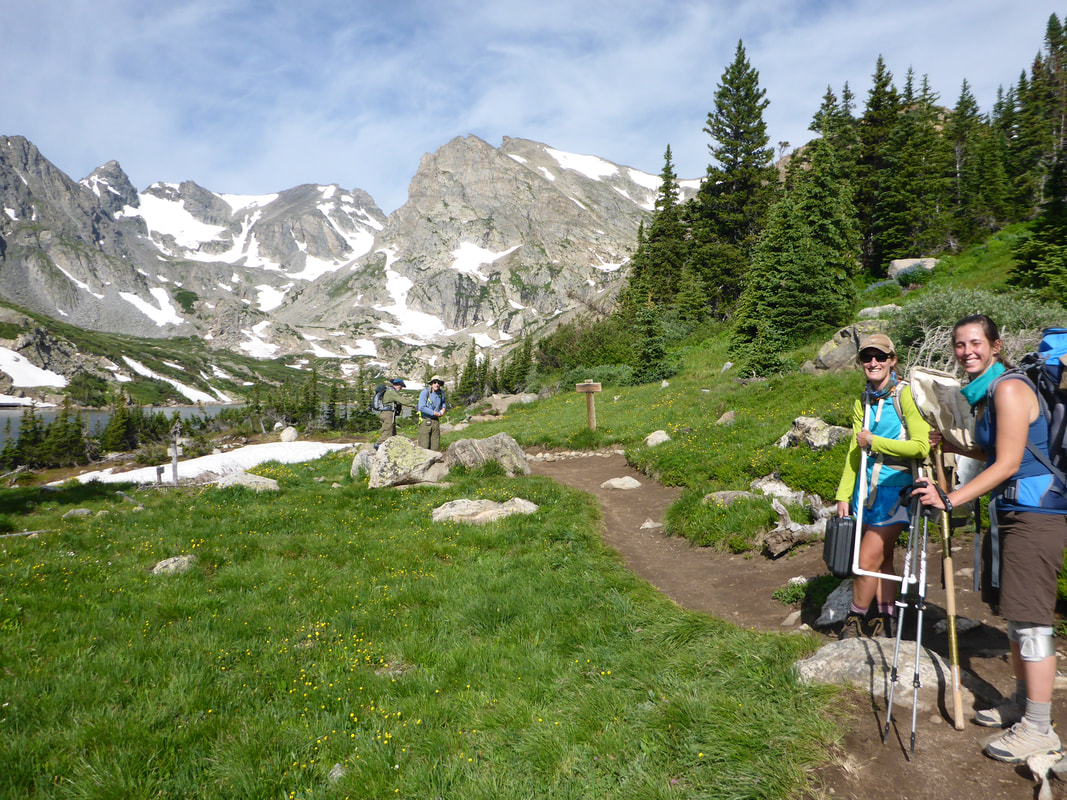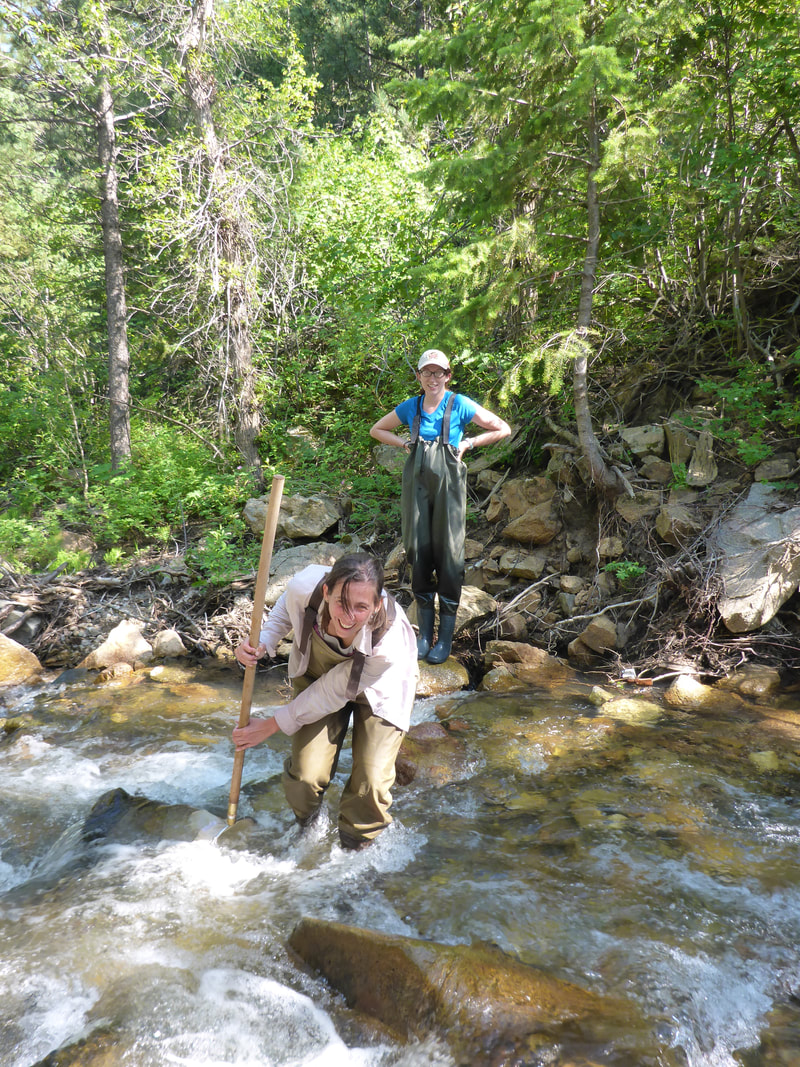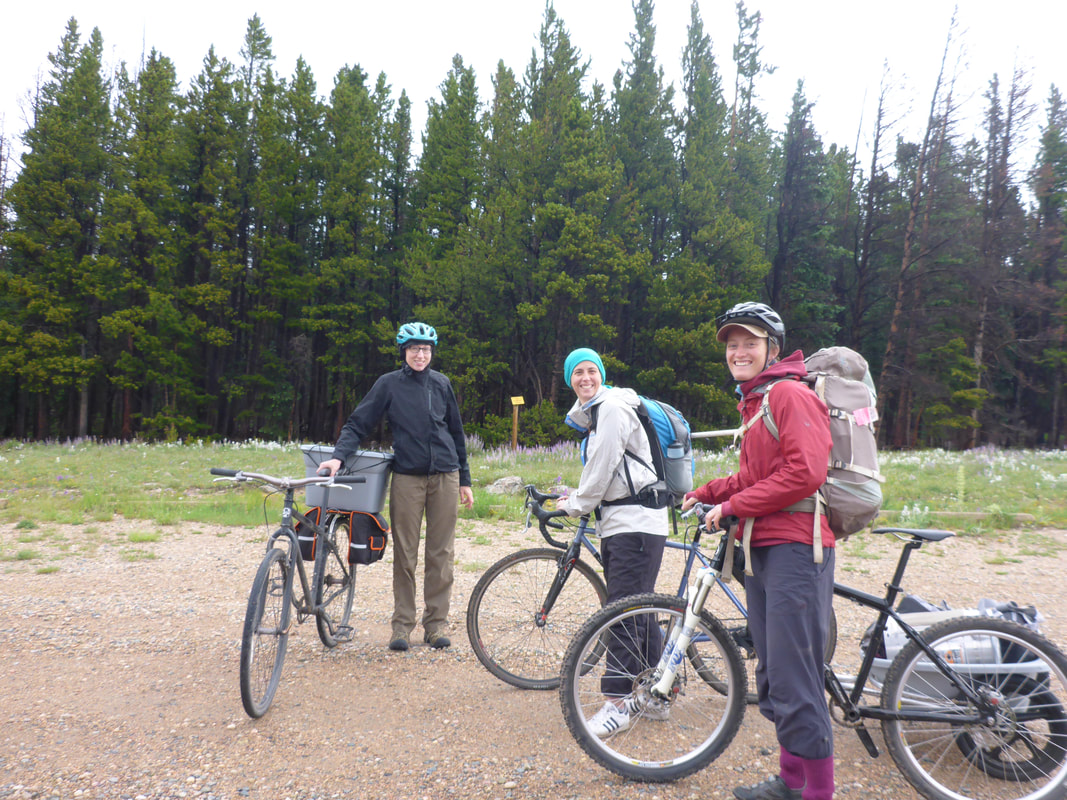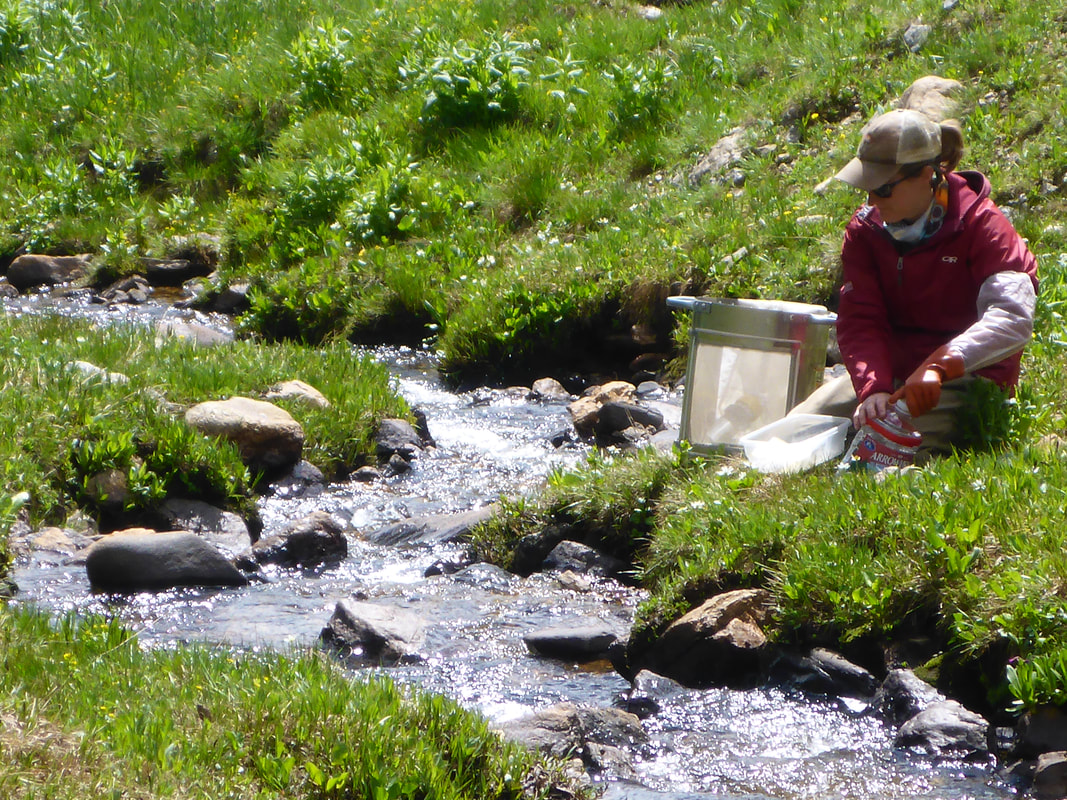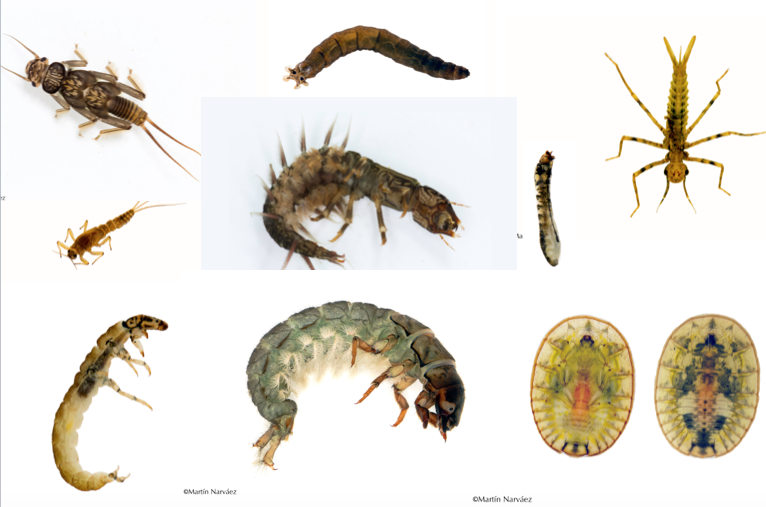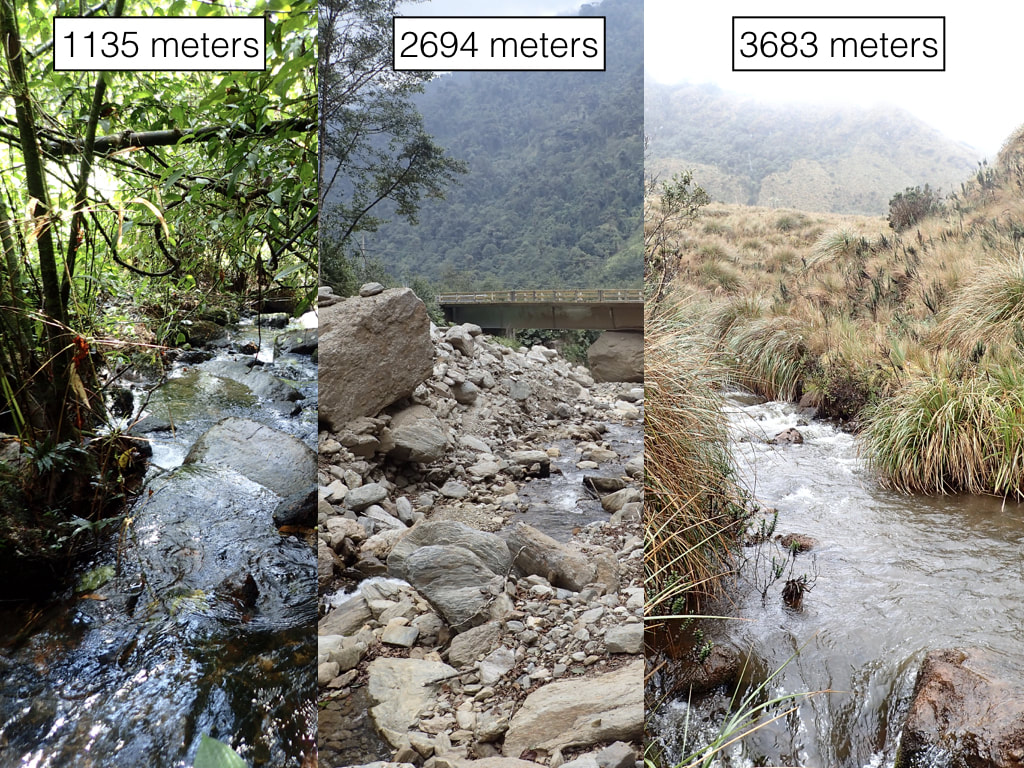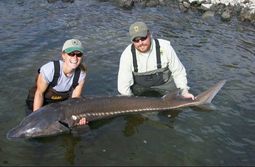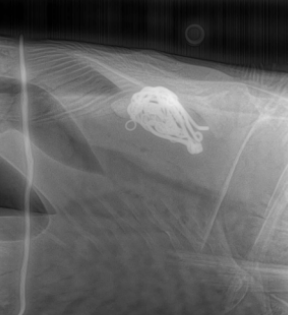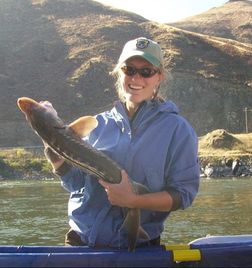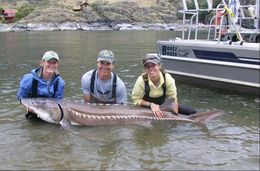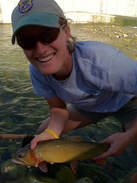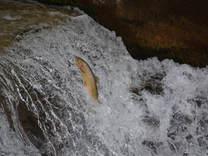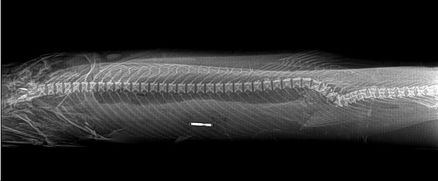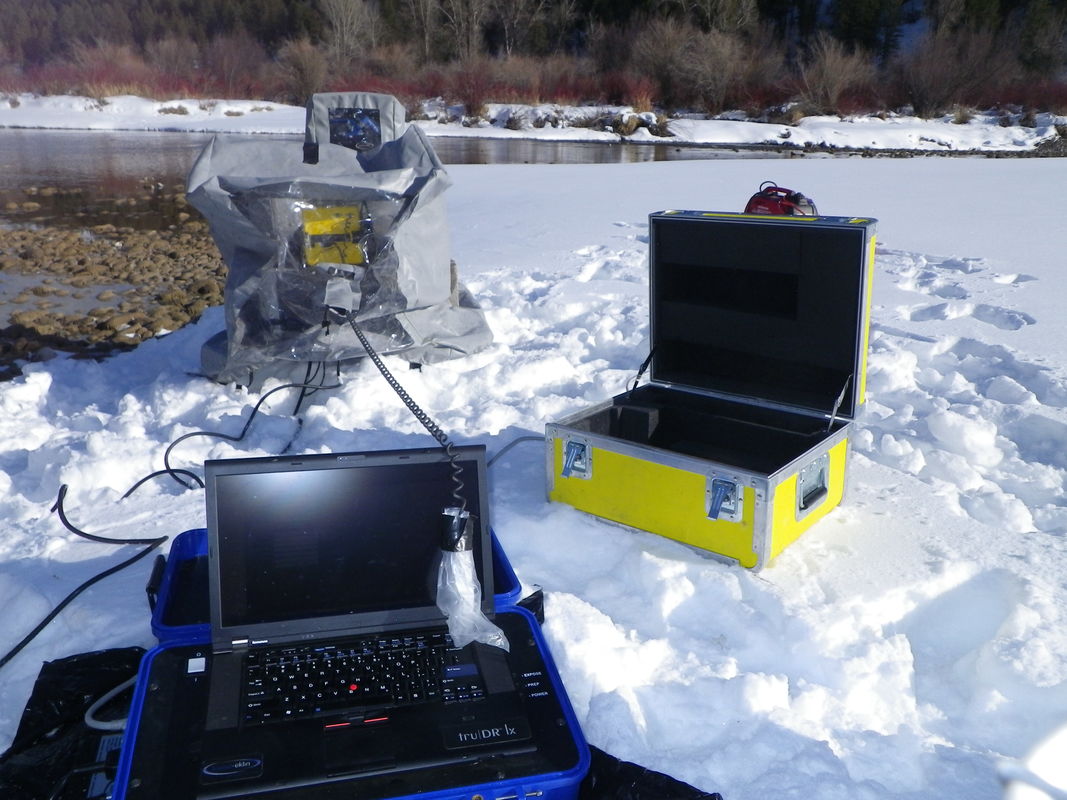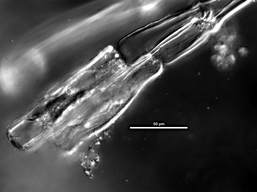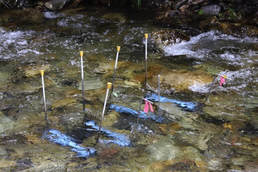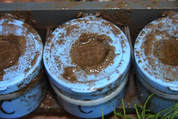Above: Guango, one of my high disturbance study sites near Cuyuja, Ecuador.
Current Projects
With global climate change, temperature and precipitation patterns are projected to change dramatically, with consequences for hydrologic regimes in mountain streams and aquatic organisms that have adapted to predictable seasonal fluctuations in stream flow. A clear understanding of flow-ecology relationships is especially needed in areas impacted by other anthropogenic pressures, such as hydroelectric development. My research focuses on the effect of disturbance on community composition and function in montane streams, combining experimental and observational approaches.
Extreme Disturbances & Consumer Resource Use
|
Project Summary
Extreme disturbances are projected to increase in many regions in the future. Understanding their ecological impacts is important for predicting shifts in ecosystem function, such as detrital processing by stream invertebrates. In 2013, massive floods caused by a major rainstorm hit Colorado's Front Range. Following that extreme disturbance event, I used stable isotope techniques to study how stream insect consumers shifted their diets along a flood disturbance gradient in small Rocky Mountain streams. I found that the floods caused increased detrital inputs to streams, and consumers responded to that pulse of resources by assimilating more allochthonous foods at sites with higher flooding intensities. Project Status: Manuscript currently in press, poster presented at Gordon Research Conference and Gordon Research Seminar, "Unifying Ecology Across Scales" in July 2016 and results presented as a talk at the Cornell Department Symposium in December 2016. |
Functional & Taxonomic Diversity Responses to Disturbance
|
|
Project Summary
Disturbance events are ubiquitous drivers of structural and functional change in ecological communities. Despite the ecological and evolutionary importance of disturbance events, we still are surprised by how community diversity responds to disturbance in many systems. I developed a predictive framework for understanding functional diversity responses to disturbance and tested the concordance of functional and taxonomic diversity responses along a disturbance intensity gradient following the 2013 floods in Colorado's Front Range, using stream insect community composition collected both prior to and at one and two years after the flood at the same 14 streams. I found evidence for functional turnover and weak evidence for taxonomic turnover, with a mismatch between the responses of functional and taxonomic diversity metrics. I also did not see any evidence of functional or taxonomic diversity recovery two years after the flood event. Additionally, I worked on a collaborative project with members of EVOTRAC to look at traits that determined persistence of taxa following the flood and genomic responses to the disturbance event. We found that resistance and resilience traits explained species' persistence, but that population genomic responses varied widely among species. Project Status: One manuscript published, another in prep. Results presented as a talk at the annual Ecological Society of America meeting in 2017 and a talk at the Cornell Department Symposium in December 2017. |
Drivers of Interannual Community Stability along Disturbance Gradients
|
Project Summary:
To understand how the ecological and evolutionary effects of disturbance structure communities, we must disentangle the mechanisms underlying organismal responses to disturbance from community compositional changes caused by disturbance. My work focuses on inter-annual patterns of variation and processes controlling community composition and resource availability in Andean streams in Ecuador. I study these relationships by observationally and experimentally measuring stream insect dispersal and colonization traits, community successional trajectories, community assembly processes, and basal resource accrual rates along a disturbance regime gradient in the Andean Amazon. My study streams are geographically close, but severe environmental gradients cause neighboring streams to differ greatly in their abiotic environments. Orographic precipitation and steep topography combine to create flood and landslide-prone streams at mid-elevations (1500-3000 m). I have spent three multi-month field seasons in the Napo drainage of Ecuador using observational and experimental approaches to understand how the striking physical variation we see along the Amazon flank of the Andes shapes stream insect communities. Project Status: Project ideas presented at annual meeting of the Society for Freshwater Science in 2015, preliminary results presented as an invited talk for the Tropical Biology and Conservation Symposium at Cornell in fall 2017. I gave talks about this work at the annual meeting for the Society for Freshwater Science in May 2018 and at the annual meeting of the Ecological Society of America in August 2018. Stay tuned for the manuscript! |
|
Past Projects
Yellowstone Cutthroat Trout Population HealthI worked for Idaho's Department of Fish and Game (IDFG) for two years as a research technician in the statewide research office. During that time I worked on several studies on factors influencing Yellowstone Cutthroat trout (Oncorhynchus clarkii bouvieri) populations across the state.
In eastern Idaho, Yellowstone Cutthroat face displacement from introduced Rainbow trout (Oncorhynchus mykiss). Part of my work centered around determining long-term trends of Yellowstone Cutthroat and nonnative trout populations. Because Yellowstone Cutthroat and Rainbow trout are both adfluvial spawners in this system, meaning that they swim into tributaries off mainstem rivers to spawn, IDFG has installed weirs and fish traps to prevent passage of Rainbow trout upstream. I led a project looking at the unintended consequences of these weirs on Yellowstone Cutthroat trout health, specifically how electric weirs compared to flow-velocity weirs affected the incidence of spinal injuries in Yellowstone Cutthroat. Publications: Larson, E.I., K.A. Meyer, B. High. 2014. “Incidence of spinal injuries in migratory Yellowstone cutthroat trout captured at electric and waterfall-velocity weirs.” Fisheries Management and Ecology 21:509-514. PDF Meyer, K.A., E.I. Larson, C.L. Sullivan, B. High. 2014. “Trends in the distribution and abundance of Yellowstone cutthroat trout and nonnative trout in the upper Snake River basin of Idaho.” Journal of Fish and Wildlife Management 5:227-242. PDF Technical Reports: Meyer, K.A., E.I. Larson, B. High, C.L. Sullivan, D.J. Schill, E.R.J.M. Mamer, C.C. Kozfkay, M.R. Campbell, E.O. Garton. 2013. Annual Report: 13-18 – Status Updates for Yellowstone Cutthroat Trout, Redband Trout, and Bull Trout in Idaho. Idaho Department of Fish and Game. PDF Larson, E.I., K.A. Meyer, B. High, M.R. Campbell, C.L. Sullivan, D.J. Schill. 2013. Annual Report: 13-03 – Wild Trout Evaluations: Electric Weir Fish Injury, Cutthroat Trout Stream Purification and Pelican Predation. Idaho Department of Fish and Game. PDF Nutrient Limitation in an Invasive DiatomFor my undergraduate honors thesis work, I studied how nutrient limitation may induce blooms in the invasive diatom Didymo (Didymosphenia geminata).
Didymo has caused nuisance blooms in streams worldwide. Its stalks contain a phosphatase enzyme that may allow it to convert organic forms of phosphorus to biologically available inorganic forms. I combined observational and experimental approaches to examine how inorganic and organic phosphorus and nitrogen limited Didymo abundance in Rocky Mountain streams with and without Didymo blooms near the Rocky Mountain Biological Laboratory. I presented my results at the annual conference of the North American Benthological Society (now the Society for Freshwater Science). |
White Sturgeon ManagementWhen I first started working at IDFG, I worked on a yearlong project looking at how fishing gear impacted wild populations of the endangered White Sturgeon (Acipenser transmontanus).
White Sturgeon's distribution in the Hells Canyon portion of the Snake River in northern Idaho overlaps with popular steelhead fishing areas. When anglers lose their tackle from snagging or other causes, White Sturgeon, who are benthic feeders, may accidentally ingest hooks, jigs and other pieces of tackle. We documented incidences of fishing tackle in the gut in wild populations of White Sturgeon, and performed experiments to measure breakdown of fishing tackle in a simulated gut in a lab setting and in commercial hatchery populations of White Sturgeon. Technical Reports: Lamansky, J.A. Jr., M.J. Belnap, D. Daw, E.I. Larson. 2014. Annual Report: 14-09 – Project 5 –White Sturgeon Research. Idaho Department of Fish and Game. PDF Lamansky, J.A. Jr., M.J. Belnap, E.I. Larson, D. Daw. 2014. Annual Report: 14-04 – Project 5 –White Sturgeon Research. Idaho Department of Fish and Game. PDF |
